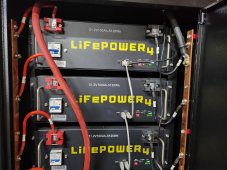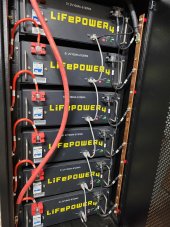Brianadams90
New Member
First time poster.
I have a EG4-LifePower4 server rack with 6 batteries and the topmost battery shows a lower charge state. These batteries were at similar voltages when installed. Is my setup wrong on the bus bars? Is this normal for the first battery?
I have 2 eg4 6500ex in 2 phase configuration. I have them set to custom charge configuration to 53.2v for about a month now. Is this a problem with not charging to 100%?
Thank you.
I have a EG4-LifePower4 server rack with 6 batteries and the topmost battery shows a lower charge state. These batteries were at similar voltages when installed. Is my setup wrong on the bus bars? Is this normal for the first battery?
I have 2 eg4 6500ex in 2 phase configuration. I have them set to custom charge configuration to 53.2v for about a month now. Is this a problem with not charging to 100%?
Thank you.
Attachments
Last edited:





